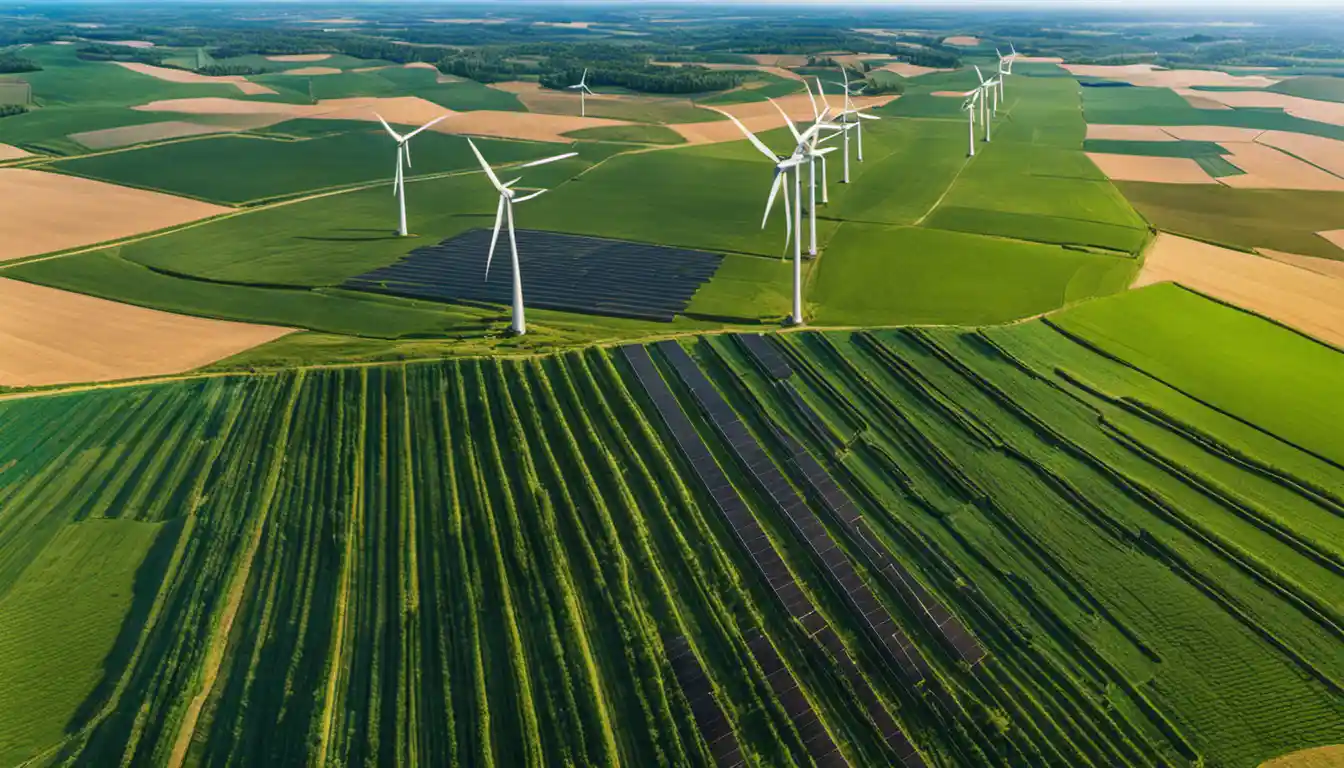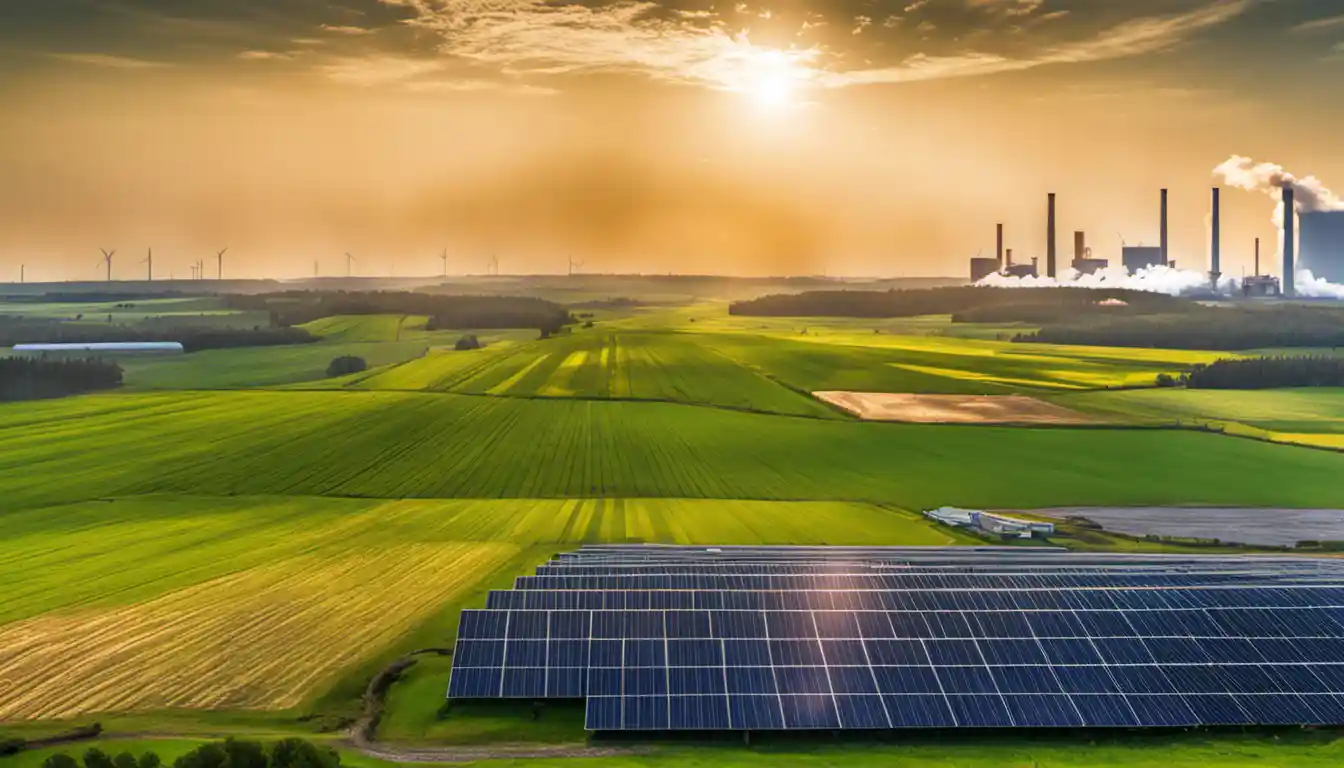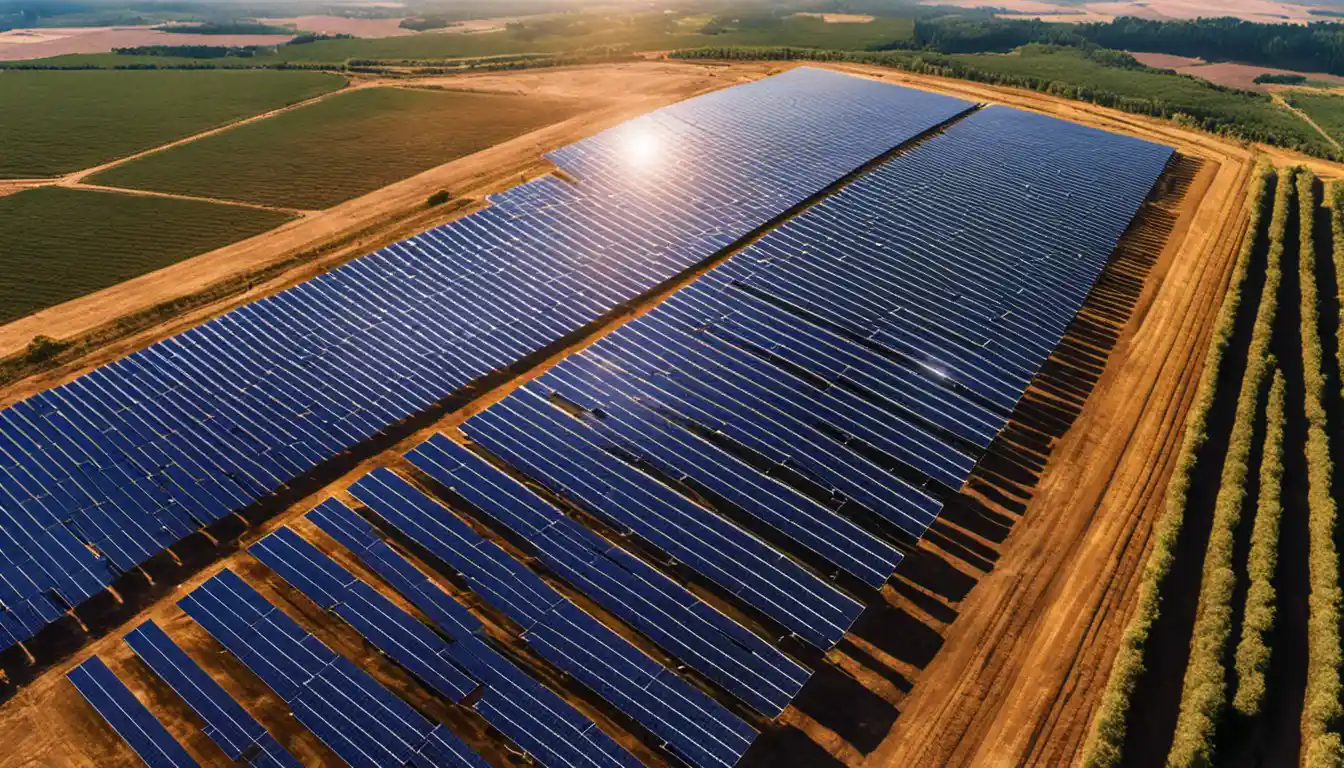Understanding Biomass and Solar Energy
Biomass and solar energy are both forms of renewable energy, but they are derived differently. Biomass is a type of energy produced from organic materials, such as agricultural crops, wood or biological waste, typically through combustion. On the other hand, solar energy is obtained by harnessing the power of the sun’s rays using solar panels, which convert sunlight into usable electricity.
Biomass Energy: What is it?
Let’s delve a little bit deeper by starting with biomass energy. At its very core, biomass energy is produced from organic materials. Think of all the things that grow around you: trees, crops, algae – these can all be converted into biomass energy. Now imagine farming waste. Old corn stalks, for instance, instead of going to waste, could be harnessed to produce energy. In practice, these materials are typically burned to release the stored energy, that can be transformed into either heat or electricity. Cool, right?
To make this tangible: I once visited a small town in Germany, fully powered by a local biomass power plant. The operation was running on wood scraps from a nearby manufacturing plant. Instead of discarding the waste, it was converted to heat the entire town during the chilly German winter.
Solar Energy: What is it?
On the other hand, we have solar energy. For millennia, we’ve recognized the sun as our planet’s ultimate source of energy. Solar energy marvelously captures this abundant resource using solar panels composed of photovoltaic cells that convert sunlight directly into electricity.
Consider this: on a sunny day at the beach, a beachgoer might use a small, portable solar panel to power a cooler. The solar panel absorbs the sun’s radiation and converts it into electricity to keep that cooler running all day.
Advantages and Disadvantages of Biomass Energy
Every energy form has its pros and cons, and biomass is no exception. The main advantage of biomass energy is that it recycles waste products that would otherwise clutter our landfills. It’s like giving mother nature a helping hand!
However, biomass energy comes with a few significant downsides. The combustion process releases carbon dioxide, contributing to the greenhouse effect, albeit less than traditional fossil fuels. Additionally, it requires a sizeable amount of input material, contributing to deforestation when not managed responsibly.
Advantages and Disadvantages of Solar Energy
What about solar energy? Well, the sun’s energy is practically inexhaustible, environmentally friendly, and available everywhere. Moreover, once the solar panels are in place, the cost of energy production is virtually zero!
But just like everything in life, there are also some cons. The initial installation cost can be quite hefty, and the energy production is dependent on weather conditions and daylight hours. Plus, let’s not ignore the environmental considerations when manufacturing and disposing off solar panels.
Biomass vs Solar Energy Performance Comparison

Let’s dive deep into the comparison between biomass and solar energy.
Energy Conversion Efficiency of Biomass vs Solar Energy
While both biomass and solar energy have their advantages, in terms of energy conversion efficiency, solar clearly stands out. The energy conversion efficiency of photosynthesis in biomass is around 1% only. Conversely, solar panels currently possess an energy conversion efficiency between 15%-20%, with new technologies continually pushing those numbers higher.
Comparison in Different Temperature Conditions
Another factor to consider is temperature. Solar panels generally become less efficient as temperature rises. In contrast, biomass energy efficiency isn’t directly affected by temperature changes.
Comparison in Terms of Initial Cost
In terms of initial costs, installing solar panel systems often requires a more significant investment than setting up a biomass system. However, once up and running, solar energy generation is nearly free, unlike biomass which continually requires the procurement of organic material.
Impact of Technological Advancements on Biomass and Solar Energy
Solar technology is rapidly advancing with increasingly efficient and affordable panels hitting the market. On the other hand, biomass technology is relatively mature with less dramatic advancements.
Comparing Electricity Generation from Biomass and Solar Energy

In terms of electricity generation, both biomass and solar energy are capable of providing stable, predictable power supply. Biomass power plants can produce electricity continuously, while solar power generation is tied to sunlight availability. However, with the advent of sophisticated battery storage systems, solar energy can now be stored easily for use during overcast or nighttime conditions.
Space Requirements for Biomass and Solar Energy Production
Biomass, despite its merits, requires a sizeable amount of space for the crops or materials it burns. Loves playing Tetris? Then you’d have an easy time maneuvering. Compare that to a solar panel that can be accommodated on your rooftop without encroaching on your living space or causing any inconvenience.
Biomass and Solar Energy: A Detailed Comparison
Now, let’s compare biomass and solar energy in terms of efficiency, sustainability, cost-effectiveness, and availability.
Comparing Biomass and Solar Energy in Terms of Efficiency
In practical terms, solar energy edges out biomass due to its superior energy conversion efficiency. And with ongoing improvement in solar technology, that gap is likely to widen further.
Comparing Biomass and Solar Energy in Terms of Sustainability
From a sustainability perspective, the scales tilt in favor of solar energy. While biomass energy is renewable, it relies heavily on the availability of organic material which can strain ecosystem balances if not managed properly. Solar energy, on the other hand, taps into an abundant and truly renewable resource – the sun.
Comparing Biomass and Solar Energy in Terms of Cost Effectiveness

In terms of cost-effectiveness, despite the higher initial costs, solar eventually is more cost-effective given that sunlight is a free resource, while biomass requires continual replenishment of organic material.
Comparing Biomass and Solar Energy in Terms of Availability
Availability of sunlight or organic material is mainly an issue of location. While sunlight is universally available, the degree of solar energy that one can generate depends on the area’s geographical location, number of sunny days and availability of clear, unobstructed rooftops. Biomass, on the other hand, heavily depends on an abundant supply of organic material.
Conclusion: Which is better, Biomass or Solar Energy
When considering biomass vs solar energy, the decision comes down to personal choice vs environmental necessities. Each renewable energy source has its unique advantages and drawbacks. Your final choice should be based on several factors such as availability, cost, sustainability, and more.
Biofuels vs Solar Energy: An Additional Perspective
Besides biomass, biofuels are also an essential player in the field of renewable energy. Although they originate from the same source – organic materials – biofuels are refined into a liquid form like ethanol or biodiesel.
Biofuels, like biomass, suffer from a relatively low energy efficiency compared to solar. They also share similar environmental implications of biomass. However, their liquid form makes them an ideal replacement for fossil fuels in transportation where solar power can’t directly fulfill.
Final Thoughts: Biomass and Biofuels vs Solar Energy
In sum, the renewables’ world is complex and exciting. Each form of energy plays a pivotal role in our transition from fossil fuels toward more sustainable options. When we compare biomass vs solar energy or even biofuels vs solar energy, it’s important to look at the big picture.
One smart way to embrace solar power is by exploring alternatives to solar panels for your home. You can check out numerous alternate ways to harness solar energy to find one that best suits your needs.
Ultimately, the best mix of renewable energy sources will depend on the environment, local resources, and individual requirements.



